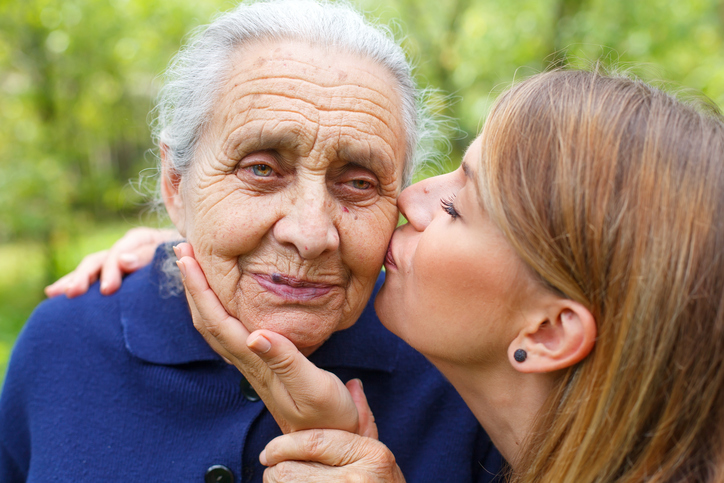- 13
- Feb
- Comments Off on 9 Ways to Connect with an Alzheimer’s Patient

9 Ways to Connect with an Alzheimer’s Patient
Alzheimer’s is a frightening disease, not least because of the way it impacts relationships. If you have a loved one who has been diagnosed with Alzheimer’s, you may find yourself struggling to communicate and wrestling with your own emotions in the face of your loved one’s confusion and mood swings. It’s important to remember that your loved one feels the same frustrations and very much needs connection. We have some suggestions on how to make that connection and communicate with your loved one, even as the disease progresses.
- Bring a child. There’s nothing quite like a child for breaking down barriers. They connect on a deep emotional level with people who have dementia, even those in the later stages of Alzheimer’s. Explain the disease to children in simple terms and encourage them to participate in simple activities with your loved one with Alzheimer’s, such as coloring or putting together a puzzle.
- Bring a pet. Like children, pets can connect with people on a deeper level. They love unconditionally without judgment, and their presence can be very comforting. Sometimes, a visit from an animal can elicit responses from Alzheimer’s patients that are completely unexpected.
- Move together. Exercise can relax the mind, increasing the ability to communicate and allowing for emotional connection. Not only that, but it’s good for the caregiver too because it’s a wonderful stress releaser. Try riding a tandem bike, taking a walk or enjoying an exercise class together.
- Incorporate music. Listening to or performing music together is a wonderful way to reach Alzheimer’s patients. Music can penetrate the mind of even severely impaired people, and sometimes, it’s the only thing that can reach them in the later stages. Even after they’ve lost the ability to remember things or recognize loved ones, they can sometimes sing songs and even remember the lyrics.
- Create something together. Art, like music, can help bridge gaps in communication for Alzheimer’s patients. It’s not difficult to work on art projects with your loved one, such as painting with watercolors, coloring with crayons, sculpting with clay or making scrapbooks. If an outing is possible, you can take your loved one to view art, because this can be soothing.
- Involve the senses. Bright colors, soft fur, a favorite song or the touch of a loved one’s hand can create immediate emotional connections. Brush your mom’s hair, massage your dad’s hands with lotion or sit in the sun together to stimulate the senses and form bonds.
- Simplify your speech. Especially when your loved one is in the early stages of Alzheimer’s, modifying the way you speak can help you communicate. Speak slowly using simple language, clear words, and short sentences. When your loved one struggles to speak, be patient, allowing him or her to finish the sentence if possible.
- Do something fun. Games, puzzles and even hobbies that used to be favorites can still be fun! Just make it simpler. Modify the rules of a game to make it easier to play, choose a puzzle with large pieces or pick a pattern for knitting or needlework that’s simpler than the ones your loved one used to do.
- Stay in the moment. Moments can still be good, even if your loved one has Alzheimer’s. It’s just a matter of managing your expectations. Set aside expectations in order to genuinely connect with your loved one. Don’t try to have a “normal” conversation, but just be, listening and responding in a way that makes your loved one feel important.
Caring for an elderly loved one with Alzheimer’s can be challenging, but Elder Care Connections has the resources to help. We’re a boutique-style agency committed to helping people find the right care for their loved ones. We pride ourselves on helping you find a caregiver who is not only capable but also compatible with your loved one’s personality. Contact us for an in-home evaluation or to learn about all we have to offer.
